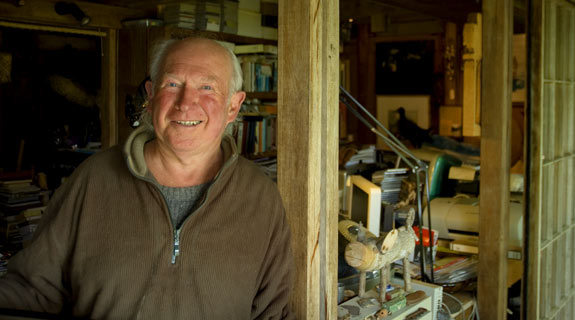Styling Sarah Heeringa, photography Amanda Reelick.
Enjoy the satisfaction – and savings – of harvesting and using your own herbs.
Once dried, you can use gathered flowers, homegrown herbs and surplus fruit skins to create soothing herbal potions, flavoured oils and tasty seasoning mixes.
You will need:
- Herb scissors or gardening snips
- Attractive glass jars and wide-brimmed bottles with lids, cleaned and dried with labels soaked off
- Twine
- Baking paper
- Extra-virgin olive oil
- Squares of cheesecloth
- Home-printed paper labels
- Clear, wide packaging tape
Harvesting

You can harvest herb leaves or stems anytime, provided you leave enough greenery behind for the plant to keep growing. Use herb scissors or garden snips to harvest your outdoor herbs in the morning as soon as any dew moisture has dried. If necessary, rinse and shake well. If it has rained the day before, or your herbs were grown indoors, you can skip this step.
Air-drying method

Arrange the herbs into small bundles, tying the stems securely with cotton or twine. Keep the bundles small enough to allow air circulation through the leaves. Hang upside down for several weeks in a clean, cool space. Herbs with larger and thicker leaves will take longer to dry. Protect from dust and bugs by covering the bundles with a loose-weave muslin cloth or paper bags punched with holes. Your herbs are done when the leaves are crunchy to touch.
Oven-drying method

Snap off any stems and lay the leaves or petals on lined baking trays. Herbs with thicker leaves (rosemary, sage, parsley, lavender, bay laurel) will take longer to dry than others (oregano, mint, flower petals), so separate them on trays accordingly.
Place trays in the centre of the oven and set the temperature to 90°C on the bake or fan-forced setting. Wedge the oven door open to let any evaporating moisture escape. Once the oven has reached 90°C, turn it off. Check the state of any delicate herbs or petals. If necessary, leave them in the warm oven for 20-30 minutes. If you have a fan setting, leave it switched on. The aim is to dry them without them turning brown. The herbs are ready once they feel dry and crunchy to the touch. Once dried, remove from oven to cool. If they still feel limp or damp, return to the oven and repeat the process.
Dried herb seasoning mix

Combine dried herbs such as parsley, sage, thyme, mint, rosemary or oregano to make a tasty blend.
Collect your various dried herbs into separate bowls. Using clean fingertips, crumble into small pieces. Combine in a large bowl.
Use to fill clean dry jars. Cut your home-printed paper labels to shape and cover using wide, clear packaging tape to create a simple laminated effect.
NB: If you dry the leftover oregano and sage stalks, tie them together with bay leaves and add them to casseroles for a herby boost, removing before serving. Thick rosemary stalks can be bundled together to keep them straight. They can be used as rosemary-infused kebab sticks.
Dried citrus zest

Preserve lemon, mandarin and orange peel for use in cooking, drinks and homemade herbal remedies.
Use a sharp vegetable knife to peel the fruit, aiming to cut thin peels with the coloured part of the skin. Lay the peel upside down on a chopping board and use the knife to scrape off any remaining white pith from the back.
Lay the strips on a lined baking sheet and dry according to the oven-drying method above. The peels will stiffen and curl as they dry. Let cool. Keep as peels, or chop finely using a food processor or powerful blender. Store in a clean glass jar in a cool, dark place.
Herb- or flower-infused oils

Use an age-old technique to extract natural oils and essences from herbs or flowers. This method uses quality extra-virgin olive oil and lavender flowers or robust fresh herbs such as rosemary or sage.
Arrange a compact bundle of fresh herbs or flowers and secure with twine, leaving an extra 10cm of twine attached.
Holding on to the long end of the twine, push the herb bundle top first into a jar or bottle so it is around two-thirds full. Completely immerse the herbs in olive oil, so they are not exposed to air. Pull on the string to gently release any air pockets.
Leaving the string still extending from the top, close the jar tightly. Leave the jar for two to four weeks in a warm but not bright location. Gently shake the jar every couple of days, making sure the herbs remain immersed in oil.
Pull the bundle from the bottle and strain the mixture using a few layers of clean, dry cheesecloth. Repeat until the oil is clear. Transfer the herb-infused oil to a clean, dry glass bottle (ideally with a dark glass). Let it settle for a week in a dark cool place. If there is any water on the top decant this off. You can use herb-infused oils in salads and cooking or in herbal lotions and potions.





